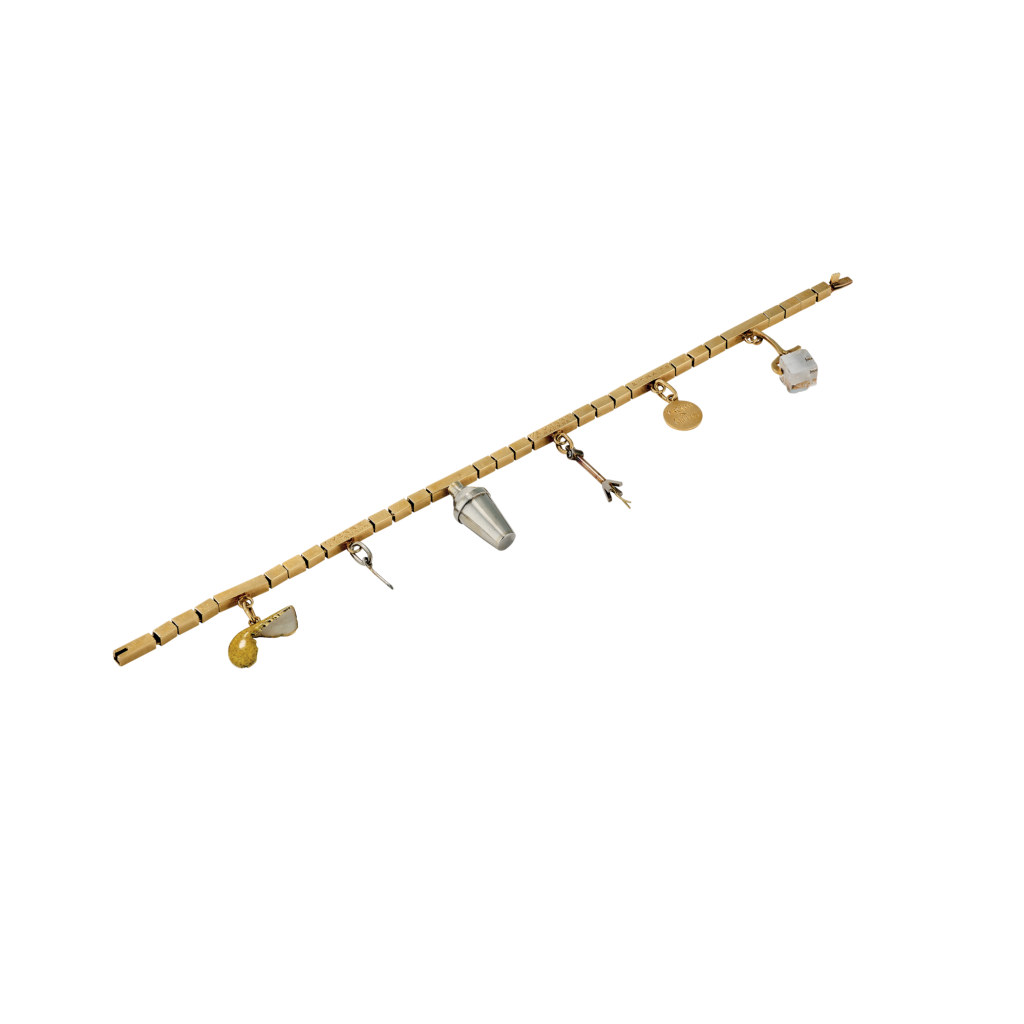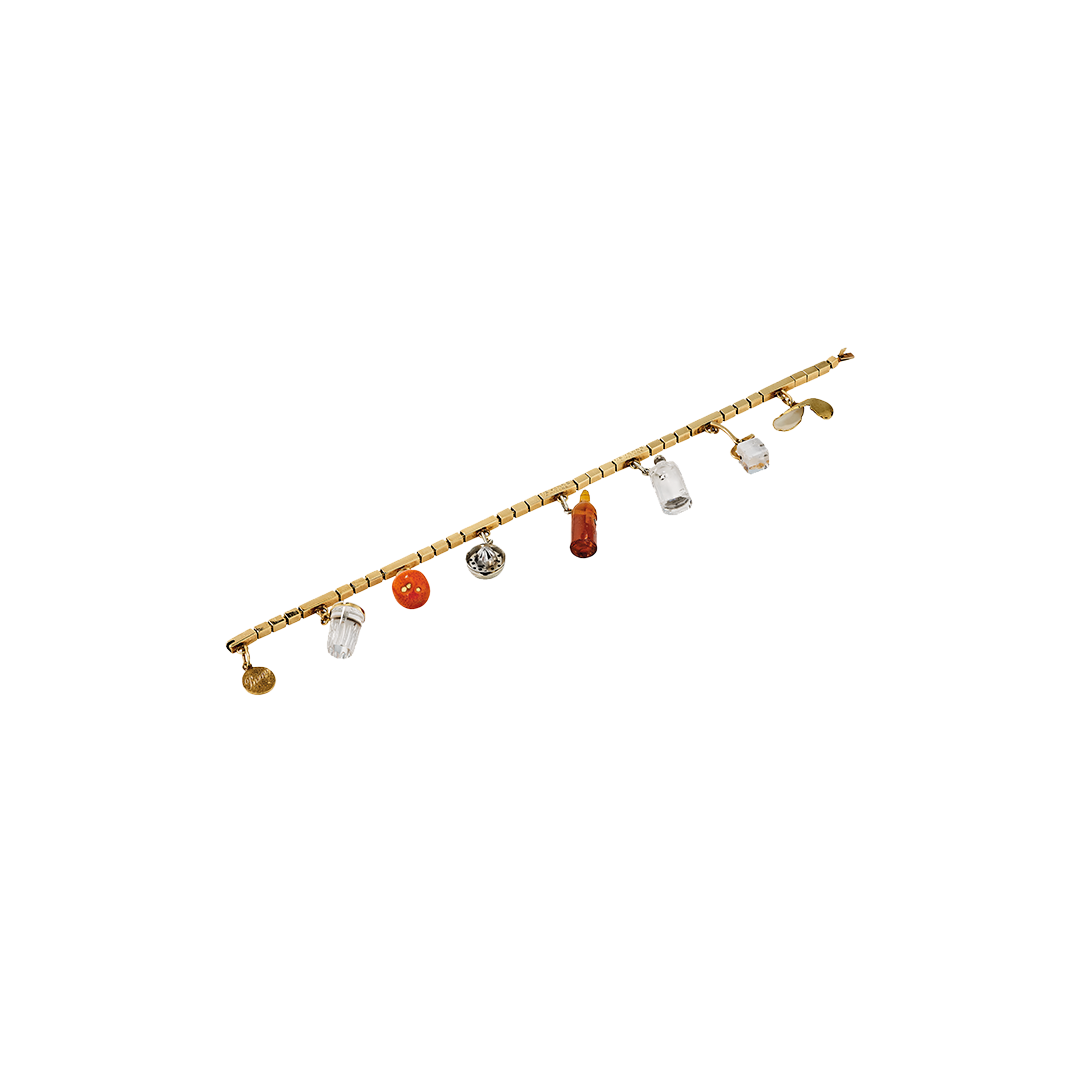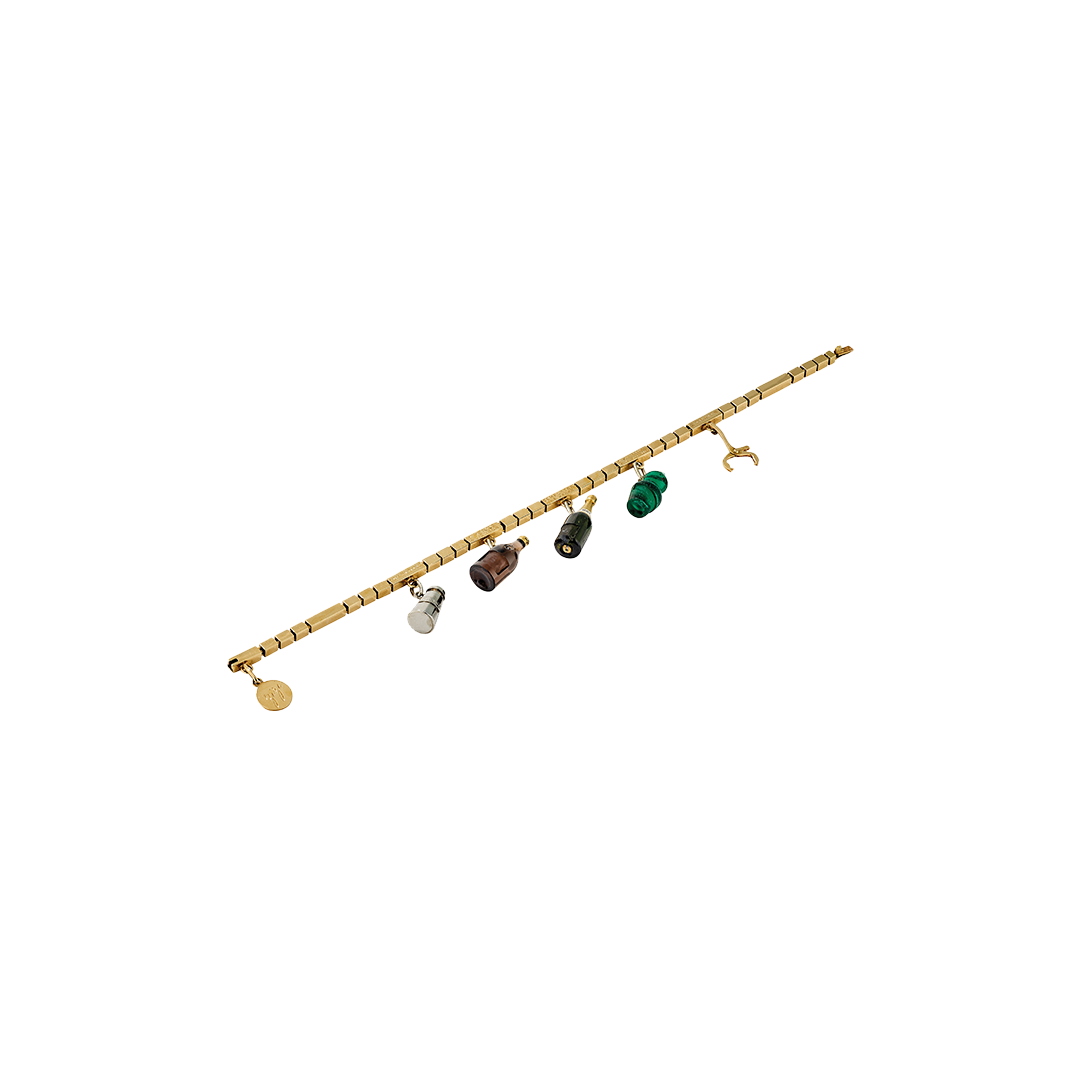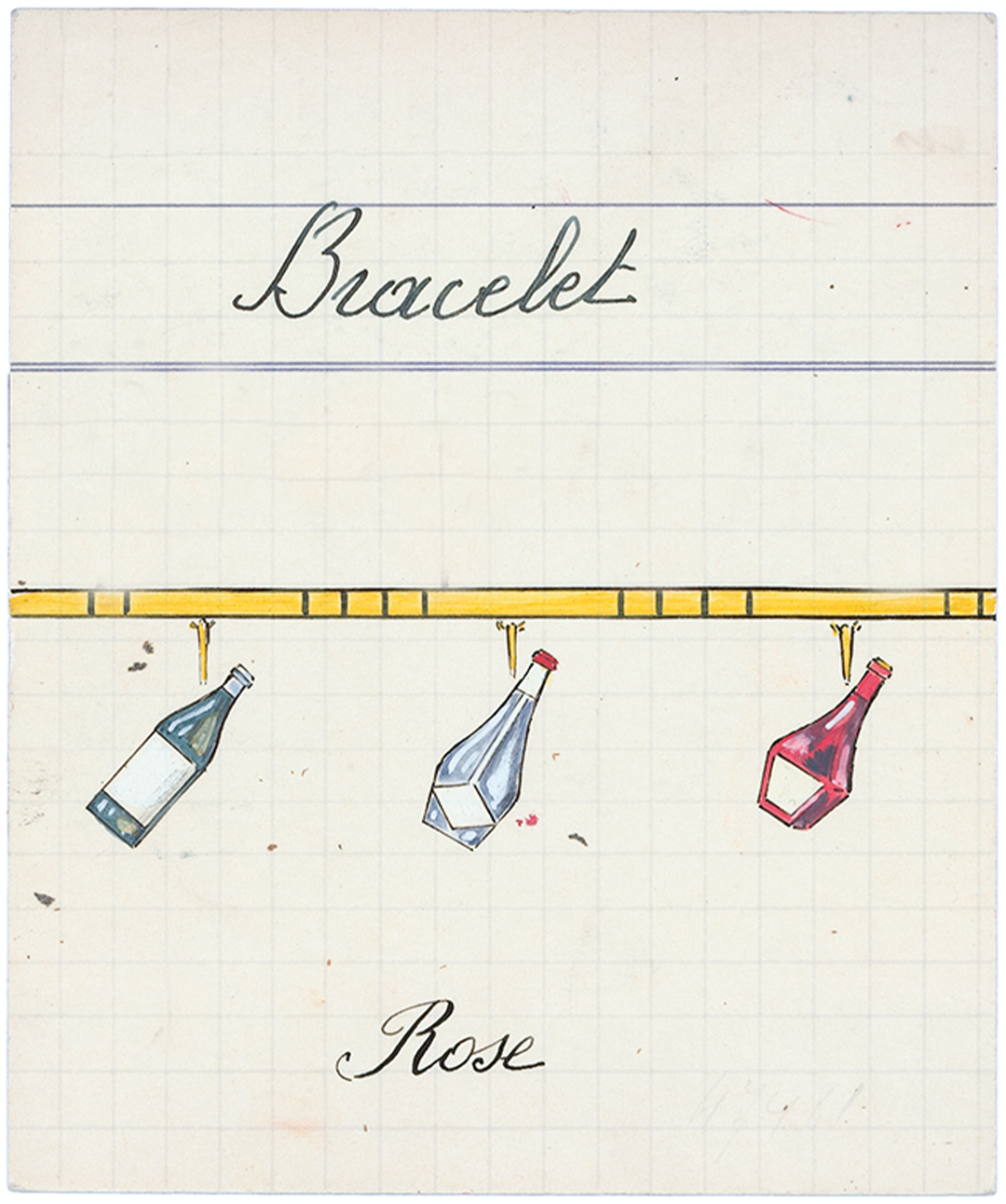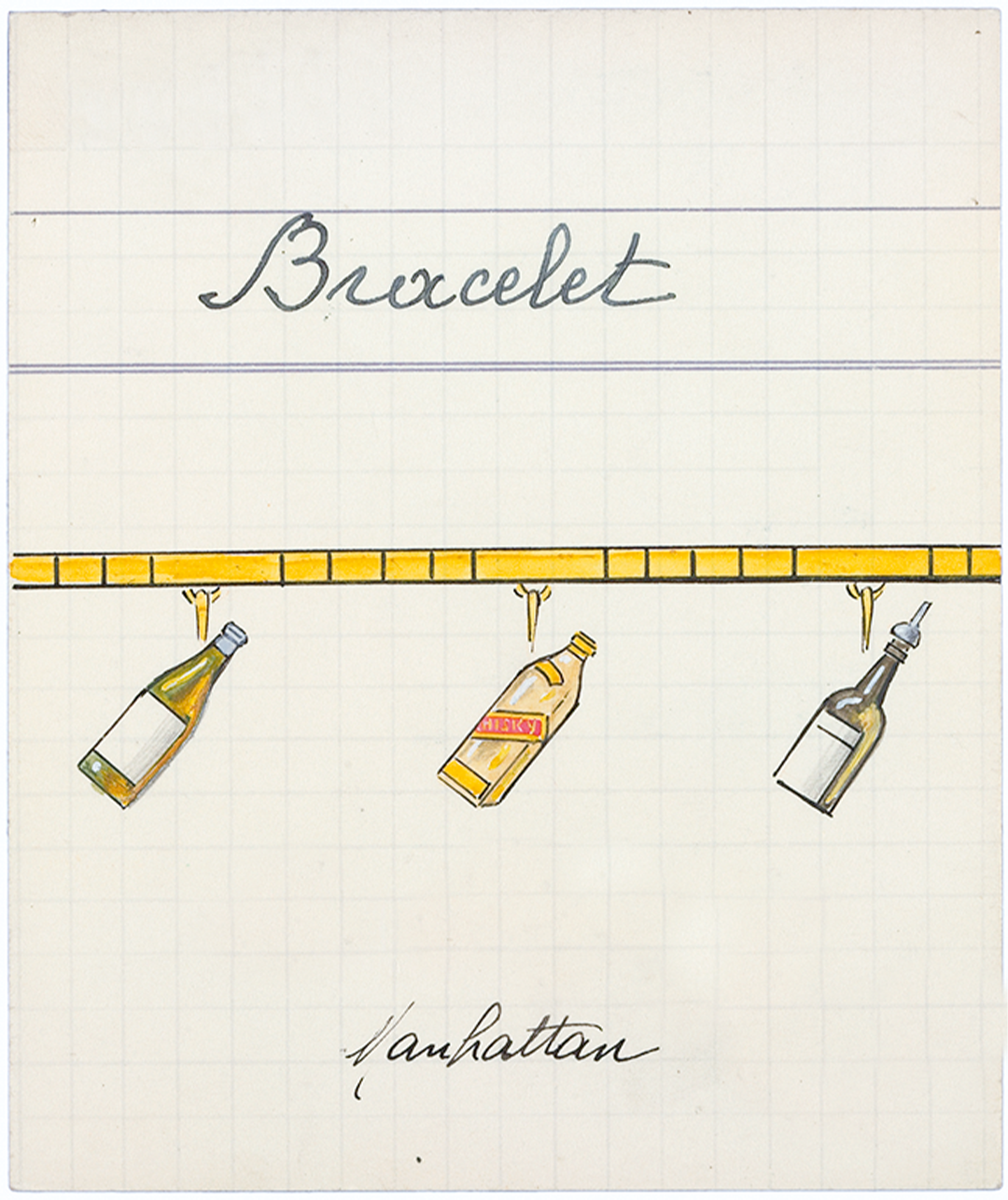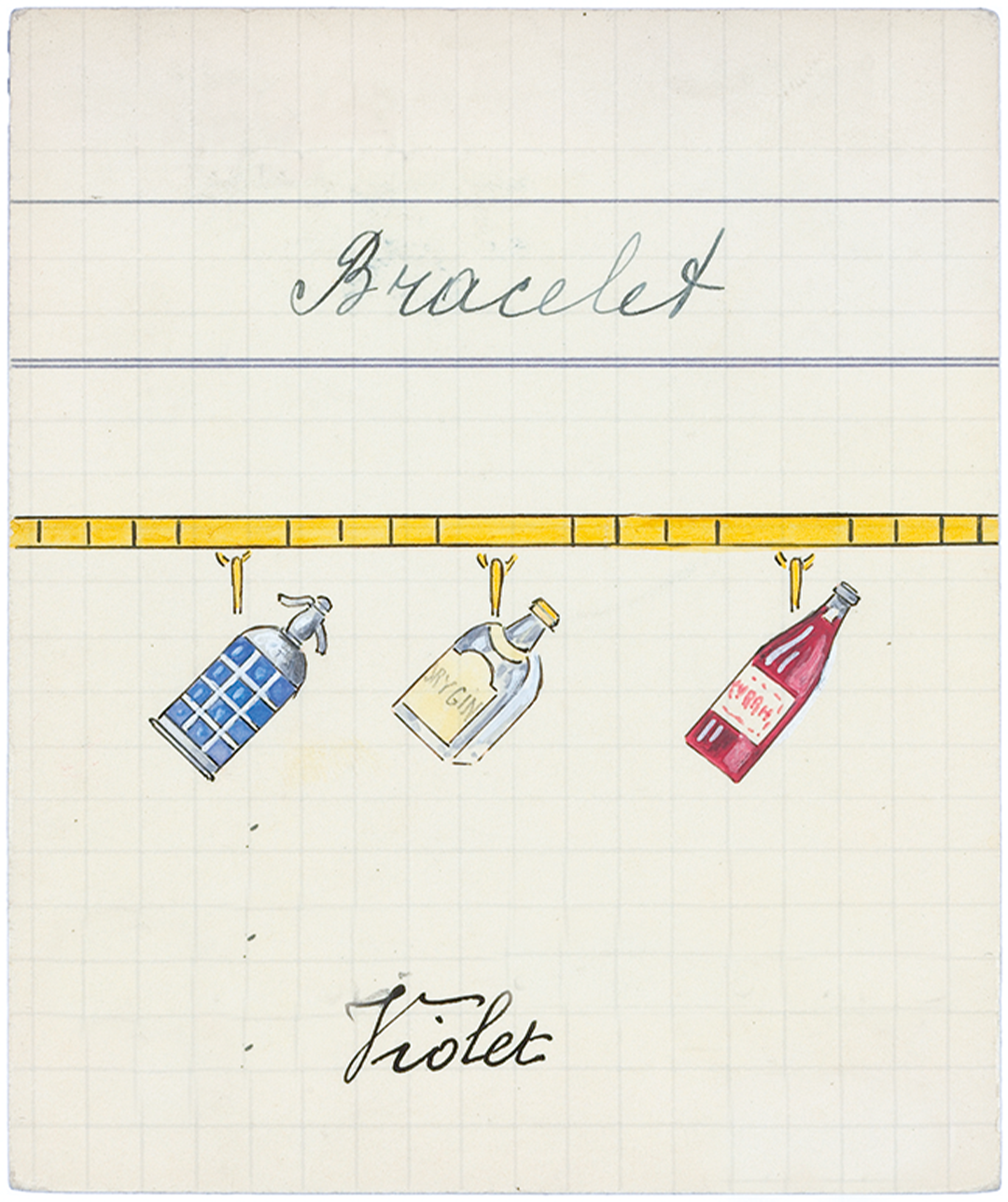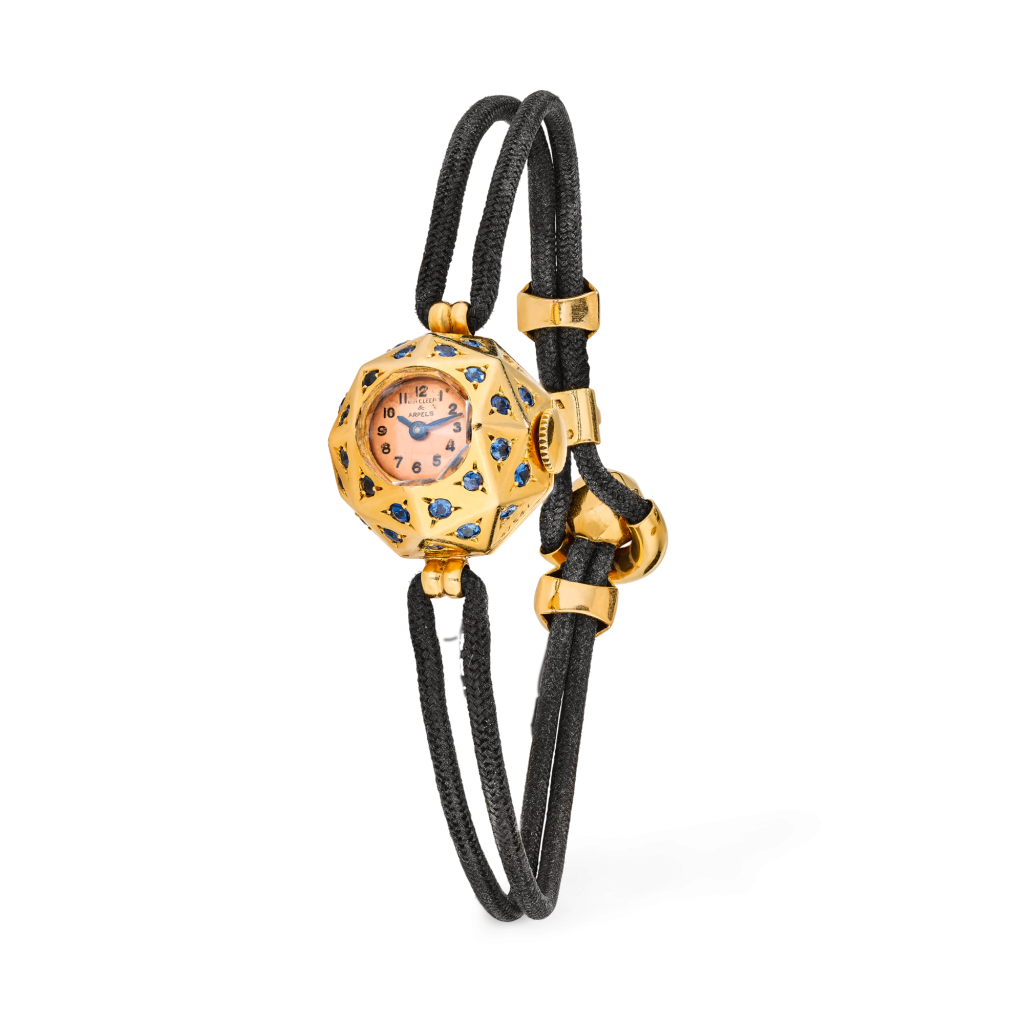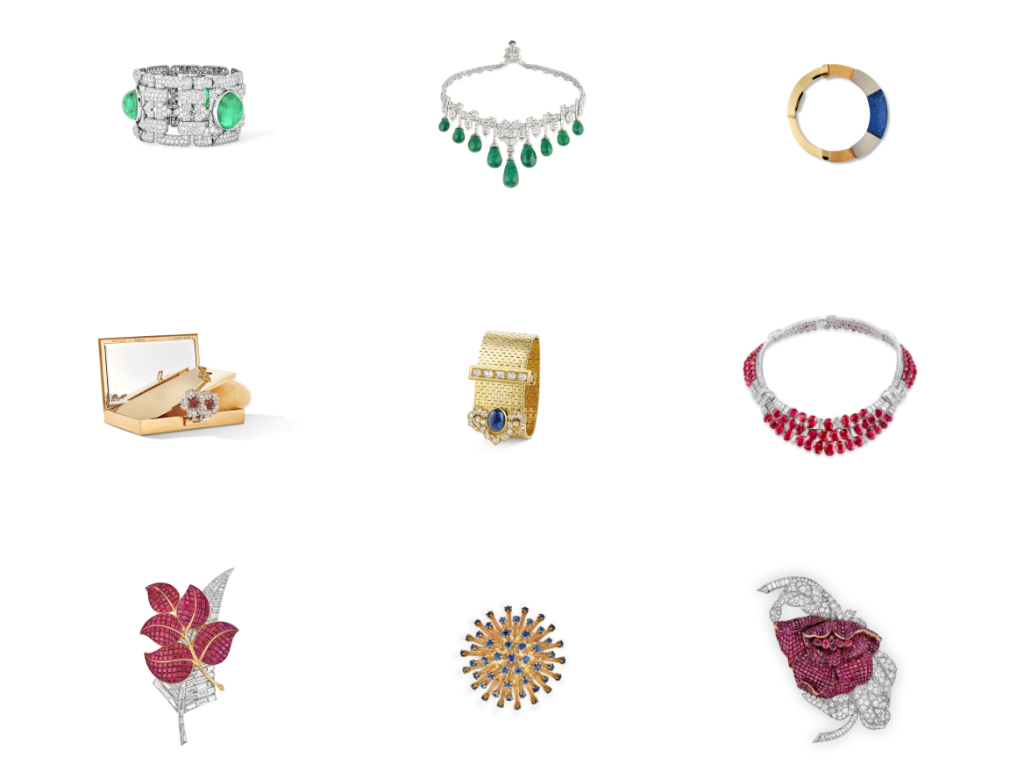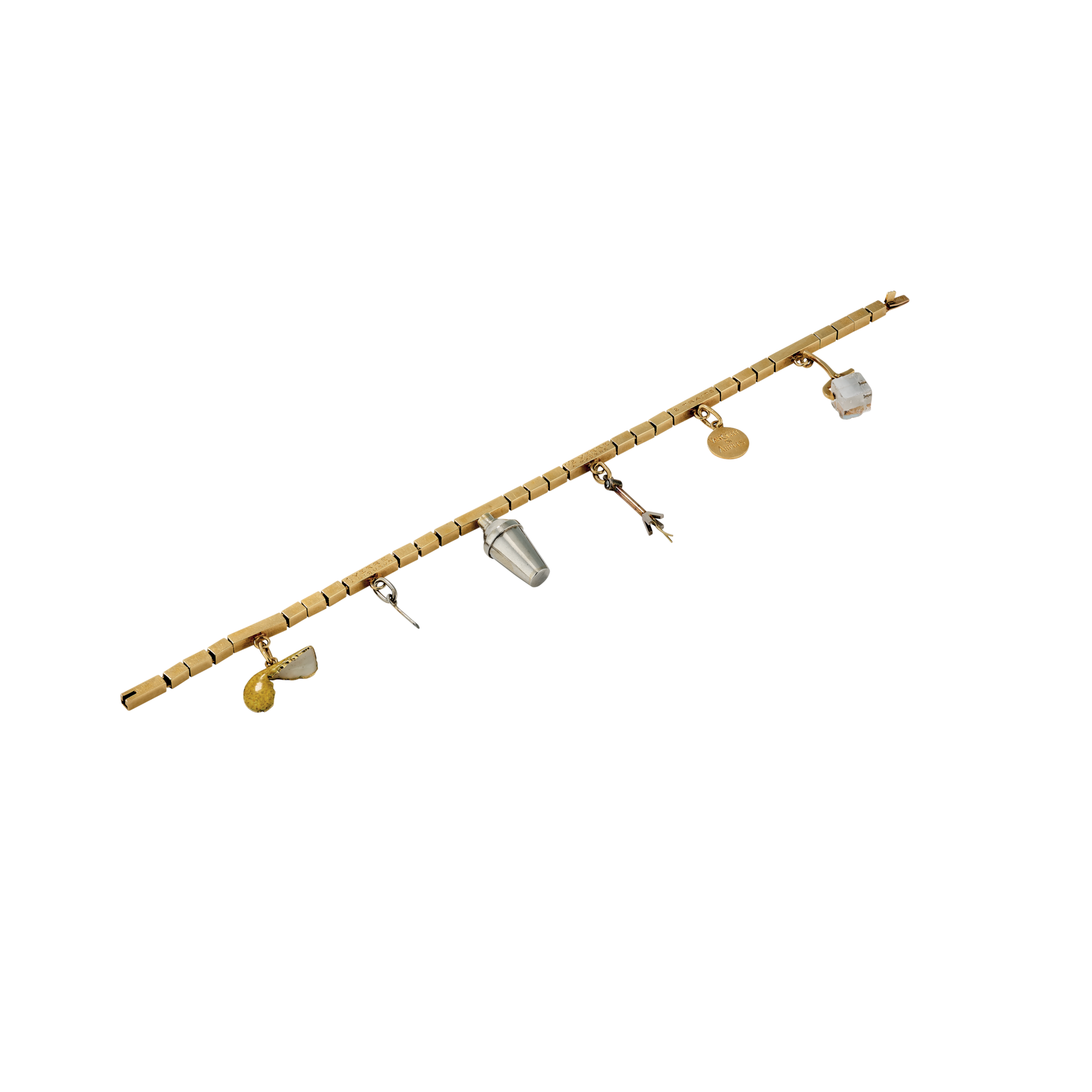
Martini Cocktail bracelet
Creation details
- Creation year 1937
- Stone Diamond
- Material Gold
- Usage Charm
- Dimensions 180 × 30 mm
The Martini Cocktail bracelet, with its highly original charms, is part of a series of jewelry inspired by cocktail-making. The charms, featuring the ingredients and utensils used for making a Martini cocktail, are attached to a chain made up of small square tubular sections of yellow gold.
These charms include a piece of lemon zest made of yellow enamel riddled with orange dots on the outside and white ones on the inside; a white gold cocktail shaker; a transparent resin ice cube held by yellow gold tongs; and a yellow and white gold frother. A couple of the charms are missing but the Maison’s archives help trace what they would have been: two bottles, one of Martini and the other of gin, probably in smoky quartz for the former and precious metals for the latter. Lastly, a yellow gold medallion stated the name of the cocktail.
Bracelets to be worn at cocktails
Few similar bracelets were made by Van Cleef & Arpels in 1937, three of which are currently conserved in the Patrimonial Collection. Each one is dedicated to a cocktail. On the Bronx bracelet we find a glass tumbler, an enameled orange, a white gold lemon squeezer, and bottles of vermouth and gin delicately depicted in detail in colored stones. The Zizi bracelet is strung with bottles of Angostura bitters and champagne, a pepper grinder, and a metal strainer-cum-beaker.
After the Prohibition
From the time of the application of the Volstead Act in 1920 to the year of its withdrawal in 1933, “the production, sale, and transport of alcoholic drinks” were forbidden in the United States. From that moment, a parallel economy flourished, favoring the production of lesser-quality alcohols. To hide the unpleasant taste of contraband drinks, many more cocktail recipes were devised in the Roaring Twenties, with names such as Bloody Mary. Although these bracelets were made four years after the end of Prohibition, they illustrate the increase in the consumption of cocktails during the 1920s and 1930s.
To go deeper
